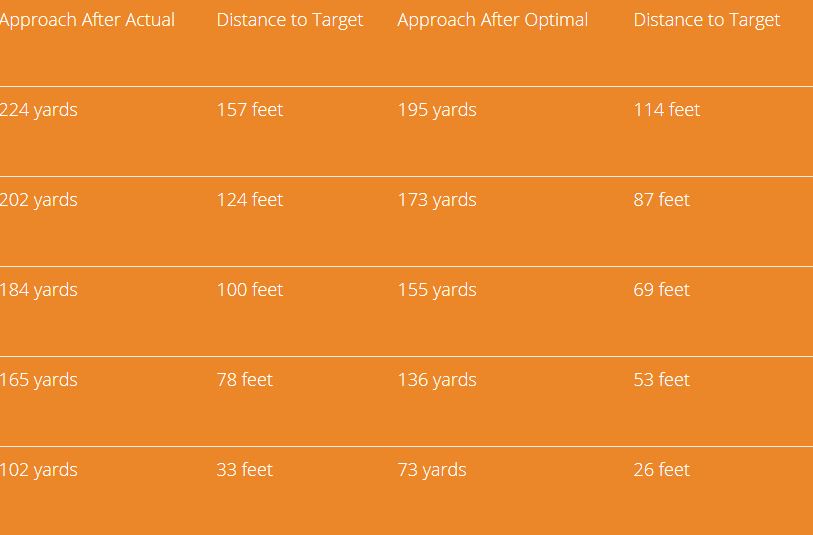With the advancement of computing power and artificial intelligence, we are able to do more advanced statistical analyses on the effectiveness of all shots in an 18 hole round.
This key measure is now known as STROKE GAINED and can be applied to all categories of the game like tee shots, approach shots, putting, and scrambling.

Being long and straight off the tee, or at a more advanced level, strategically placing your tee shots, will lead to better scores – but this is obvious. But now we can quantify it.
Driving longer and being in play simply diminishes your average proximity to the hole:

This shows you how much closer you would get to the hole on average if you simply gained distance by becoming super efficient with your driver.
From 165 yards, you might hit it to 78 feet from the hole. This could lead to a tricky pitch, perhaps short sided You’ll likely make a bogey, and possibly a double, if you are in trouble.
But from 136 yards, a golfer would average 53 feet, which is probably a simple chip across the green, or from short of the green, and maybe a super long putt. He’d convert some one putt pars, and be much less likely to suffer a double. Stroke gained.
See how driving well gains strokes?
The top 5 in strokes gained on the PGA Tour are:
- Rory McIlroy 1.28 strokes gained per round
- Bubba Watson 1.01
- Dustin Johnson .84
- Tommy Fleetwood .81
- Jon Rahm .80
It’s a who’s who isn’t it? The top 3 are multiple major winners, while 4 and 5 have been runner up and will probably capture one someday. And all 5 play really well at Augusta National.
Your strokes gained by becoming a better driver will be many more than 1.28! You might gain 5, 10, or maybe more by picking up the 30 yards you’re probably missing due to efficiency.
You would suffer many less penalty strokes off the tee. You would reach all the holes in regulation strokes. And it would make you a better chipper and putter through proximity.
We might have to rethink ‘drive for show, putt for dough!’
